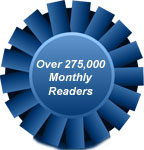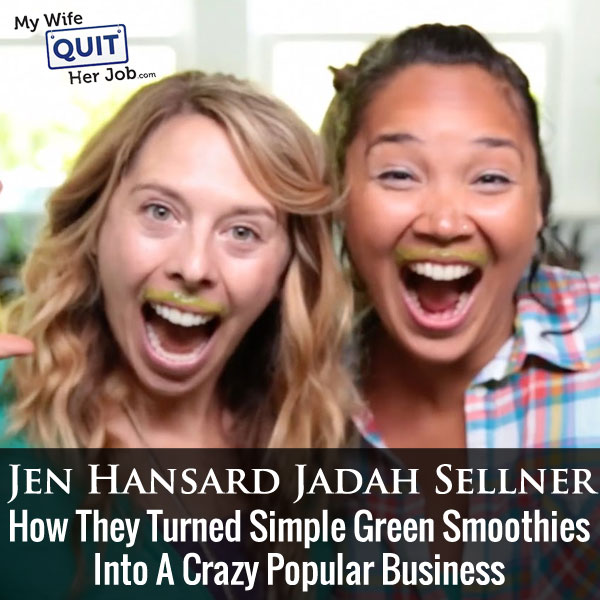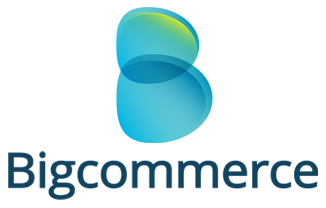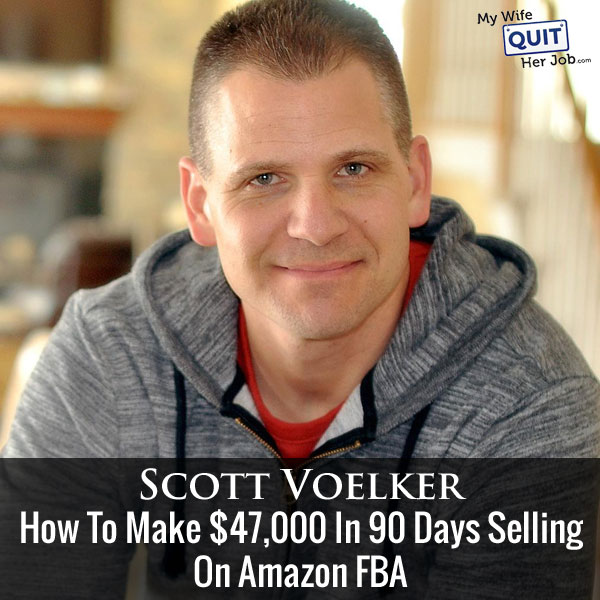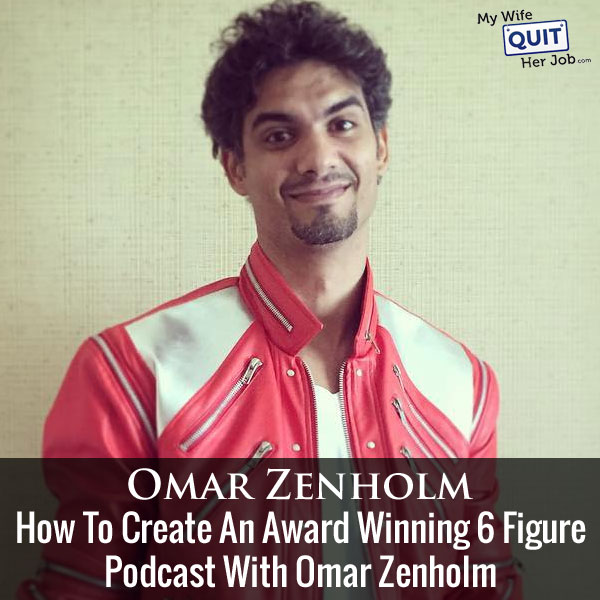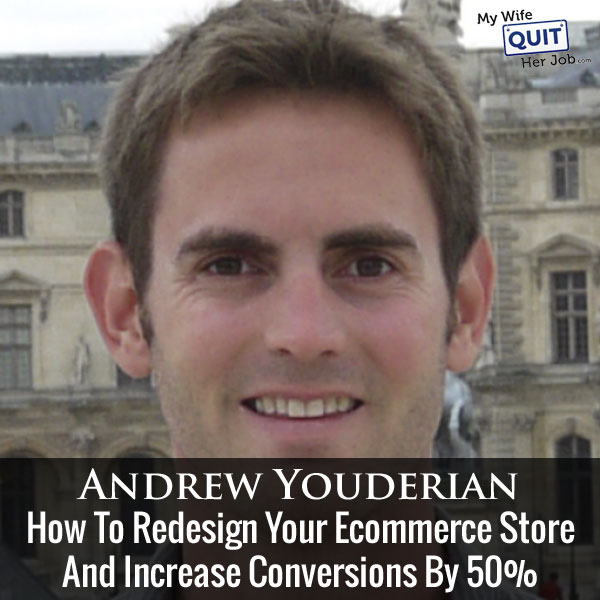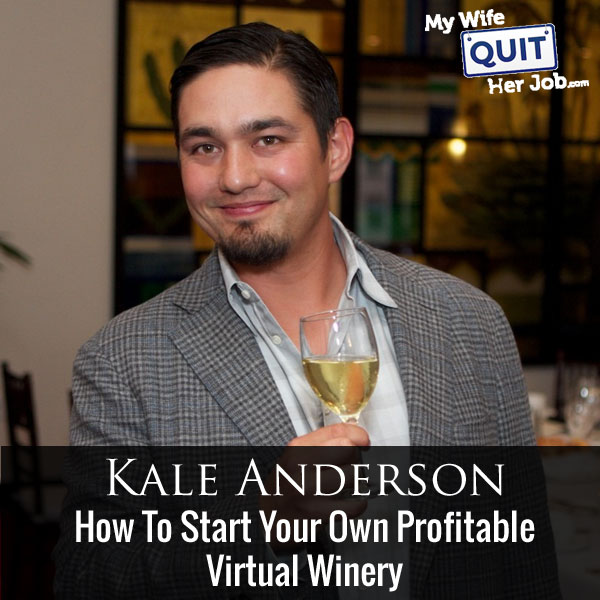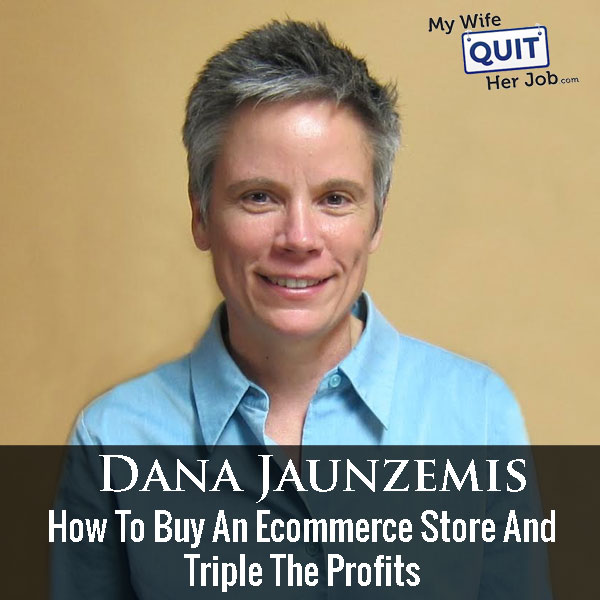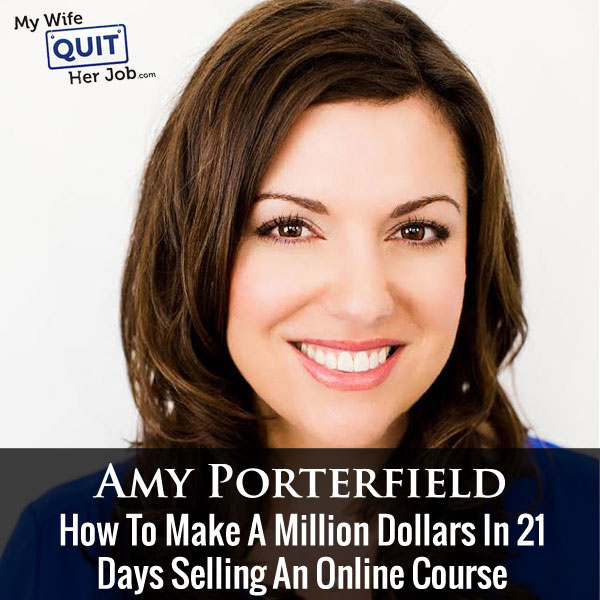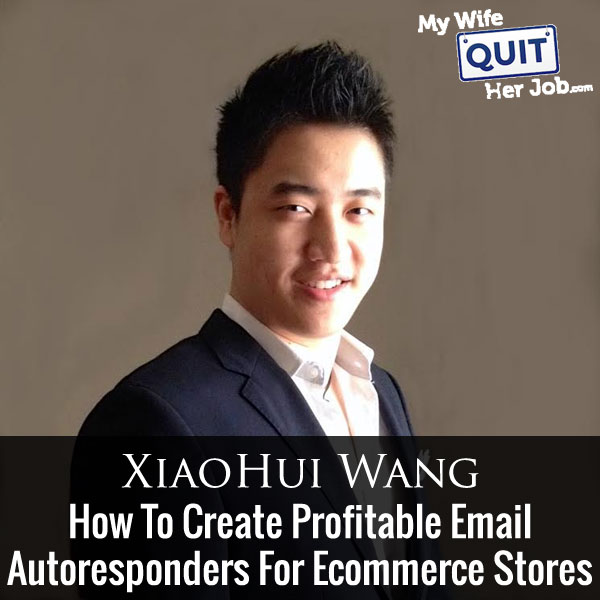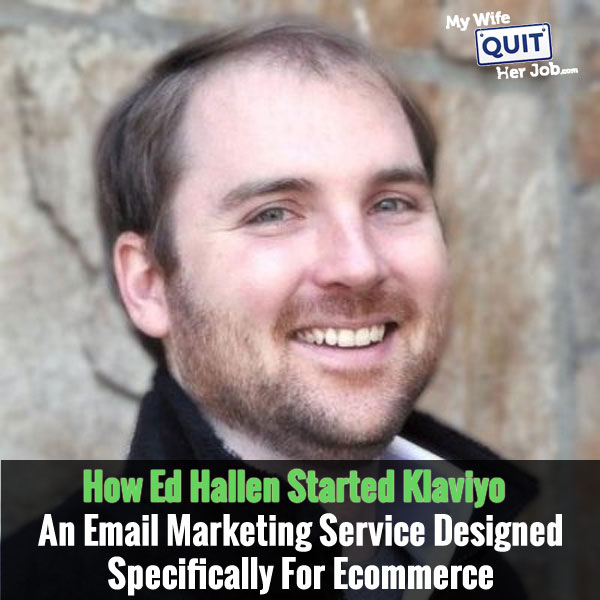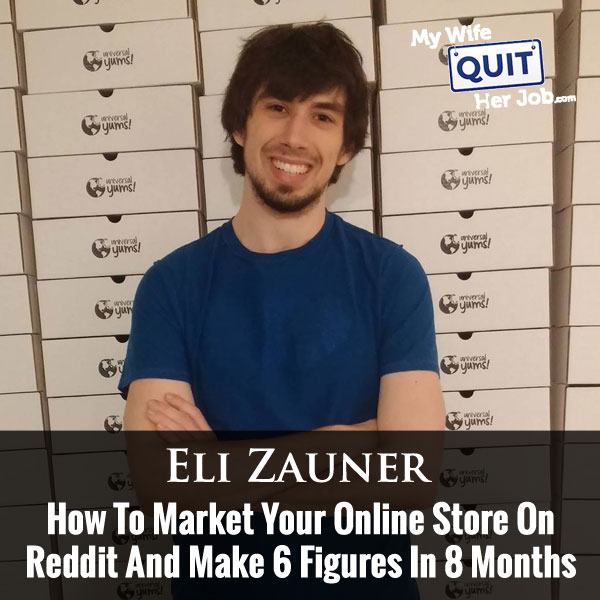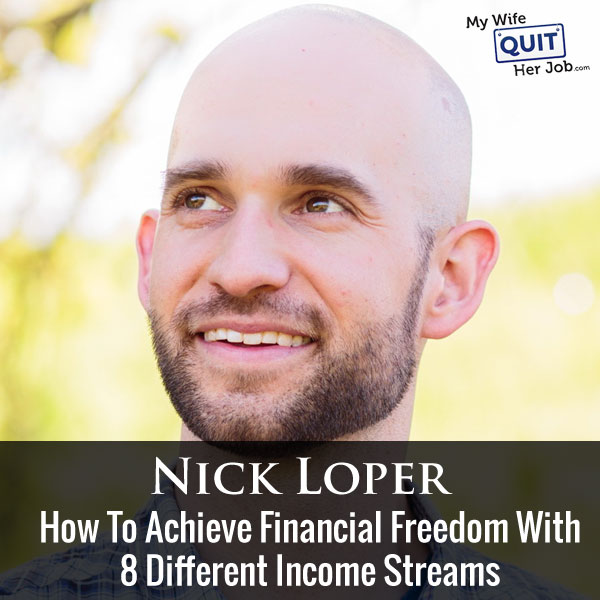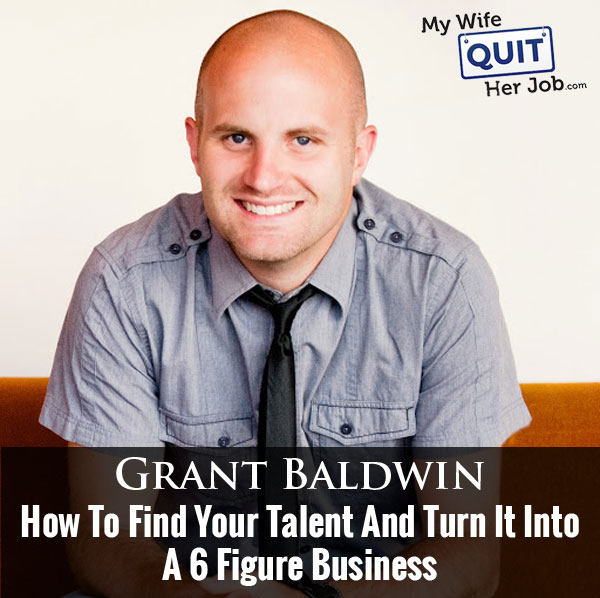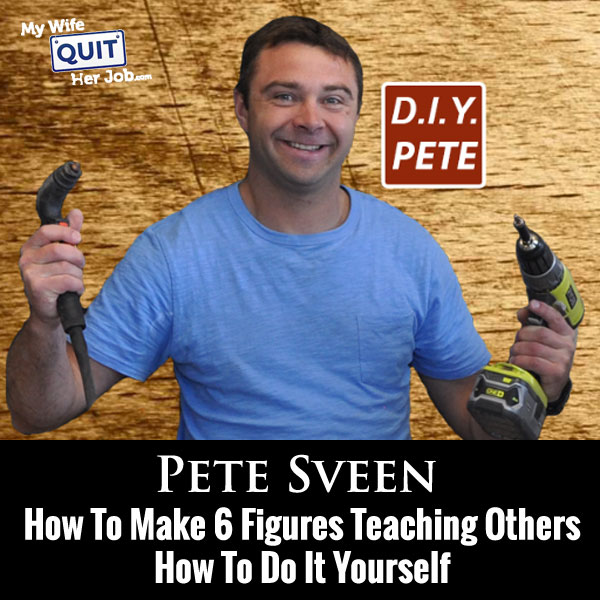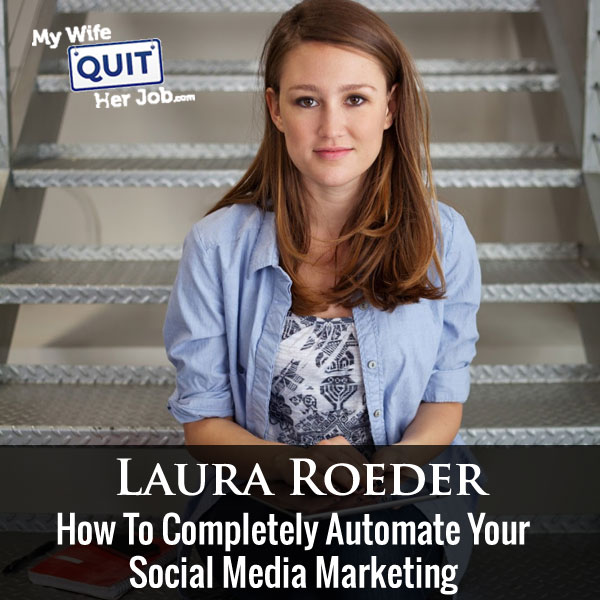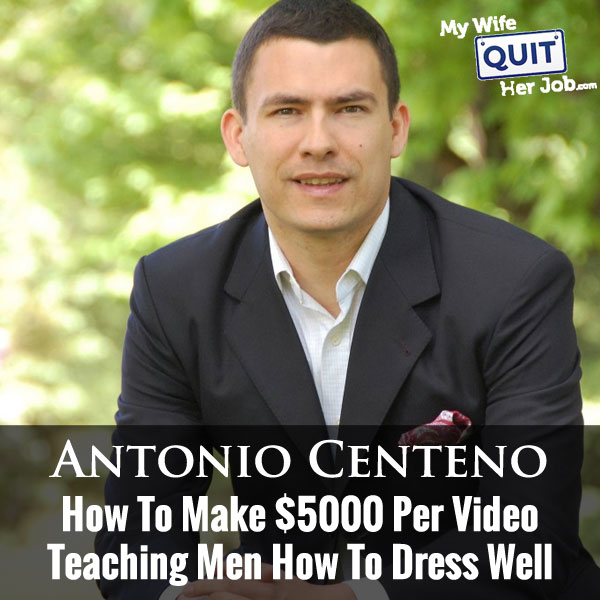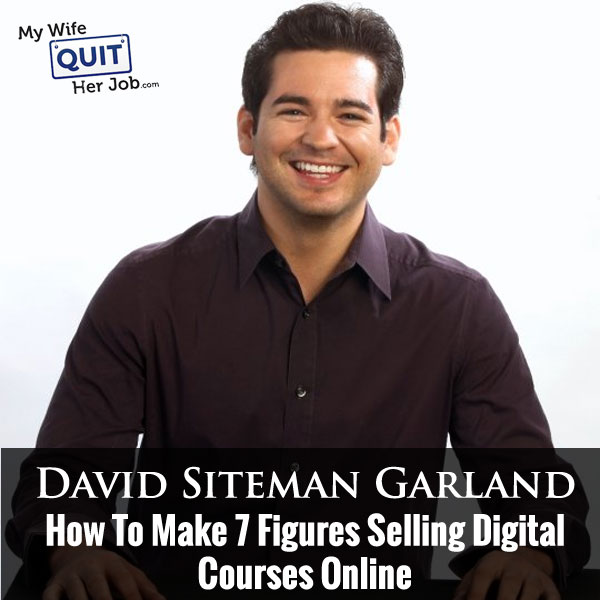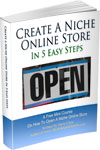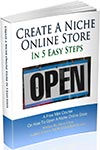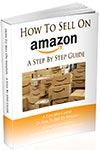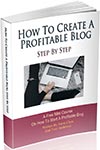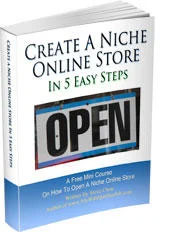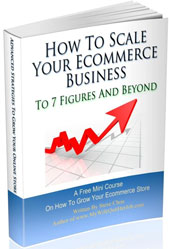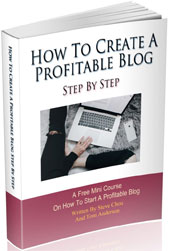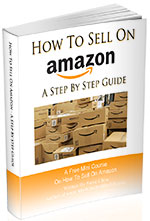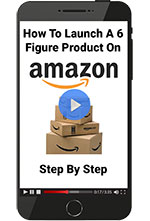Podcast: Download (Duration: 53:16 — 73.4MB)
I’m really happy to have my friend Jadah Sellner and Jen Hansard on the podcast today. I actually had the pleasure of seeing Jadah speak at the World Domination Summit in Portland Oregon a couple years back and it was an amazing and inspiring talk that she gave.
Both Jadah and Jen run SimpleGreenSmoothies.com where they teach others how eat much healthier and lead healthier life styles. And when I say that their site is popular, I mean that it is crazy popular.
They have almost 300,000 facebook fans, over 200,000 email subscribers, 380,000 Instagram followers, insane traffic to their site, and they’ve been in the press all over the place.
Enjoy the interview!
What You’ll Learn
- How Jen and Jadah created such a large audience in a short period of time
- Jen and Jadah’s early traffic strategies
- Their motivations for starting their business
- How they overcame the early challenges
- Some great instagram strategies you can use for your business
- How to structure a high converting autoresponder sequence
- How to build a die hard community
- How to get people to take part in challenges
Other Resources And Books
- SimpleGreenSmoothies.com
- Take the 30 day challenge
- Check out preorder their new book!
- Jen Hansard’s Personal Blog
- Jadah Sellner’s Personal Blog
Sponsors
BigCommerce.com – If you are interested in starting your own online store, then click here to get 1 month free
HostGator.com – If you are interested in starting your own WordPress blog, then click here to get 30% off webhosting at HostGator.com!
Transcript
Now if you enjoy this podcast please leave me a review on iTunes, and if you want to learn how to start your own online business be sure to sign up for my free six-day mini course, where I show you how my wife and I managed to make over 100k in profit in our first year of business. Go to www.mywifequiteherjob.com, sign up right on the front page, and I’ll send you the free mini course right away via email.
Now before we begin I want to give a quick shout out to my sponsor Bigcommerce. Now Bigcommerce is a fully hosted shopping cart platform that allows you to set up your own online store in minutes. And as most of you probably know, I teach a class on how to start a profitable online store and Bigcommerce is actually one of the shopping carts that I highly recommend in my class. Now here’s what I like about Bigcommerce. Unlike other competing platforms, Bigcommerce does not nickel and dime you with every little shopping cart feature. And when you sign up, you’ll immediately have a fully featured and extremely powerful shopping cart at your disposal.
There’s also an incredible theme store where you can choose from a variety of attractive store designs, so you don’t really need to hire a designer. And everything from design to payment processing is all built-in, and all you got to do is populate it with your own products. So you can literally start your own online store in a matter of hours. Simply go to bigcommerce.com/mywifequitherjob sign up and you will instantly receive one month free. Once again the URL is bigcommerce.com/mywifequitherjob.
I also want to thank HostGator for sponsoring the show. HostGator is an incredible webhost that I highly recommend. And in fact did you know that mywifequitherjob.com was hosted on HostGator in the very beginning? They offer 24/7 live support, via chat, phone, and email, one click WordPress installs, an easy to use website builder, design services, marketing services and the best part is that I’m offering a 30% discount for all podcast listeners. So please go to HostGator.com/mywifequit to redeem the discount. Once again that’s HostGator.com/mywifequit, now onto the show.
Welcome to the My Wife Quite Her Job Podcast. We will teach you how to create a business that suits your lifestyle, so you can spend more time with your family and focus on doing the things that you love. Here is your host Steve Chou.
Steve: Welcome to the My Wife Quit Her Job Podcast, today I’m really happy to have my friends Jadah Sellner and Jen Hansard on the podcast today. Now I actually had the pleasure of seeing Jadah speak at the World Domination Summit in Portland, Oregon a couple of years back, and it was an amazing and inspiring talk that she gave. Now both Jadah and Jen run simplegreensmothies.com, where they teach others how to eat much healthier and lead healthier lifestyles. And when I say that their site is popular, I mean that it is crazy popular. They’ve got almost 300,000 Facebook fans, over 200,000 email subscribers, I’m not even sure if this data is up-to-date actually, it’s probably much higher.
Insane traffic to their site and Simple Green Smoothies has been in the press all over the place. Now I can actually totally relate to why their site is awesome. I have got two kids and kind of as a parent I don’t always have time to eat well. And in fact I was guilty of going through like the MacDonald’s drive through just the other day; often times I would just grab some crap from a fast food joint and call it a day.
Now Jen and Jadah hold theses challenges to convince you to eat better through healthy smoothies. And besides running their website I believe they also have a book, and did I mention that they also run this amazing business while raising kids as well on opposite coasts. In any case, I know that you are going to find their story inspirational, so welcome to the show Jen and Jadah, how are you guys doing today?
Jen: We are doing excellent.
Jaddah: Good.
Steve: So I was telling these two that this is the first time that I have interviewed two people simultaneously before, so we’ll see how this goes. Can one of you give us — or both of you maybe; give us the quick background story and tell us kind of how you came up with the idea for Simple Green Smoothies to start?
Jen: Sure, I’ll go first, Jadah and I — first we met as friends in a moms group when we had our babies in Los Angeles, and that was in 2010 — no 2007, wow it’s been so long. And from there we actually moved apart and we were Facebook friends, but then one day we decided that we wanted to start online businesses. And Jadah reached out to me and shared her idea with me, and I was doing graphic design at that time with my own freelance business. And we ended up deciding that we could find a way to partner together to create something even better than what we could do on our own.
And so that’s where we started a blog called Family Sponge. So Simple Green Smoothies was not the first business that we started together, the first one was a parenting blog in 2011. And we did that for a whole year, and that was really like our playground and our testing ground to figure out how we could grow a business online and grow a community to it. And from that we decided we wanted to make an eBook on green smoothies to get parents drinking them and also the kids too. And so that was the first product idea for Family Sponge, but the funny…
Steve: So why green smoothies — sorry, is there a story behind that? Were you guys eating like crap like I do or…?
Jadah: Yeah, definitely the drive through MacDonald’s, all of that was I assume was on the list actually Jen at Taco Bell.
Jen: Taco Bell, because it’s a major one.
Steve: Sorry, Taco Bell.
Jen: Taco Bell and Starbucks is the perfect combination.
Jadah: Yeah, so actually in the summer of 2011 my aunt introduced me to green smoothies and I remember kind of just freaking out, she was like just kind of all these promises of weight loss and energy, so I was like I’ll try anything to lose weight. So I went to Trader Joe’s with her and saw her picking up bags of kale and avocado and pineapple, and I’m just like, oh my goodness, I’m not about to drink this.
And I just watched her put everything in the blender. She blended it up and I hesitantly had that first sip and when I actually drank it, it was love at first site for me, I couldn’t believe how good that smoothie tasted. And actually I got my husband and my daughter to try that very same week, and they were totally on board. And I was just telling everyone including Jen like you have to try and make a green smoothie, like this is amazing.
And within the first three months of me drinking one green smoothie a day, it was just a ripple effect of healthy habits that started just kind of coming at the same time, I was like, I want to take a break from meat, I want to cleanse, I want to — I’m eating mushrooms and tomatoes which I’ve hated my entire life. And by that three months I had lost 27 pounds. So I knew that this green smoothie habit was bigger than just something that I wanted to keep to myself, and Jen and I were super excited to share it with the rest of the world, and…
Steve: Oh, sorry I just wanted do you guys still have cravings for like Mickey D’s at all anymore or?
Jadah: I have never been a Mickey D’s lover, but I will say…
Steve: Oh sorry Taco Bells, Chalupas, sorry yes.
Jadah: I don’t do — I do Double Decker, Tacos, but I serve the meat for beans, and that is like my– the thing I eat when my husband makes me go out to Taco Bell.
Steve: Sorry Jen I interrupted you, you were saying something.
Jen: Yeah, I was just going to share like at that time when Jadah first started drinking the green smoothies and she called me on the phone and we were talking about it, and at that point I had been a vegetarian for about 13 years. So a very long time, I had two young kids and I was so exhausted. And she is on this phone with me just like high energy, so excited about this green smoothie thing. And I’m like I remember writing down the recipe, I was like okay, this is what I got to do, I got buy spinach like serious thing, and put spinach in the blender, and she is like trust me it’s going to be okay.
So I took my whole family to the grocery store with me and we picked out all the fruit, we got the bananas, the [inaudible 00:08:52] and mango, the fresh spinach. And we went home and we made that first green smoothie together. And the kids were just as excited to do it as I was. And they were one and a half and three years old at that time. And we drank that for a sip together and everyone loved it, and it just awoke me to this idea that salads don’t have to be gross. Because until that point I was a vegetarian that despised salad and Taco Bell bean burritos and Double Decker were like my vegetarian food of choice.
Steve: Interesting because like my kids if they see something really green — so did you like wrap it on a brown paper bag like a foodie?
Jen: No, that’s first it only had berries in it too, so it made it purple.
Steve: Okay, and so you guys were inspired by these Simple Green Smoothies and you decided to start a blog to kind of spread the word, right?
Jadah: Well, actually it didn’t even start out as a blog like Jen said the intention was to create this eBook about green smoothies, and actually share it on Family Sponge our parenting blog. So a friend of mine actually encouraged us to start an Instagram account just sharing the green smoothie recipes. And this was just to help promote the future book — the future eBook. So there was a lot of hesitance and resistance to starting another social media platform, because at this time like the only people that were commenting on Family Sponge’s Facebook account was like my mom, and my cousin Alex who had — yeah, so I always say that we all have to start at zero.
We had zero fans and zero followers at that time, and so I hesitantly created the Simple Green Smoothies Instagram account, and Jen and I were just like, well let’s just see what happens. So it really started from July 2012 when we started the Simple Green Smoothies Instagram account that that became the kick off ground to kind of proof of concept that people actually wanted to hear more about green smoothies. Where we hustled like crazy, Jen was like web development design machine creating this website that finally simplegreensmoothies.com went live November 2012.
Steve: So you guys had the Instagram account before the actual website?
Jen: Yeah, because that was an Instagram account that was going to generate a community and interest in a digital product, it wasn’t to create a business out of. But we realized that we had some traction going with this Instagram that sometimes when you have traction like that it means that you have to leave something else behind and for us that was Family Sponge. So at that point we made the shift where our Instagram account for Simple Green Smoothies was really taking off, and we didn’t have the bandwidth to keep growing Simple Green Smoothies and building a website at the same time, as maintaining our parenting blog and posting everyday on that.
So we kind of pulled apart from that and put all of our energy into Simple Green Smoothies and doing better photos for green smoothie recipes. Jadah upgraded her iphone to from the iphone 3 to the iphone 4 so the Instagram photos would start looking a little prettier.
Steve: They have the six now you know that right Jadah?
Jen: Yeah, Jadah and I actually got the iphone 6 feature for Valentine’s Day this year.
Steve: What was I going to ask you, oh, yes, so Instagram it’s just photos right? So how do you kind of start a business on Instagram, can you kind of describe the — like your Instagram following is huge, I think you have like 300 and — over 300,000 followers.
Jen: Yeah, 373,000 followers right now.
Steve: Yes, so how does one generate such a large account, and how do you actually use that to market a business, because you’re only allowed that one little link in your profile right?
Jadah: Yeah, a big thing with Instagram I mean obviously you can add content in the photo caption. So this is kind of a mistake that a lot of bloggers make is they have a social media account and they want pull everyone off of where everyone is hanging out. And they kind of say that social media is like a dance club. So that’s kind of where you want to show your dance moves, so it would be kind of creepy if a guy was like, hey girl you want to see my dance moves, well, you got to come to my house to see them. So I look at your blog as your house, and so we really were intentional in sharing the full recipe content on the actual Instagram post, instead of like, hey go to a link and follow us here.
So we built the trust by adding value in sharing full recipes on Instagram, and people started to like us and trust us, and like, oh my gosh you guys you have to check out this thing that they share free recipes on Instagram. So from there it was a lot easier that when we did have a website up and a free opt-in offer to say, hey now do you want to come join us over here on our blog? And do you want to sign up for our email list which I like to say is like the bedroom, you have to build a lot of trust to get them into your bedroom. And Jen you can talk a little bit about kind of like our test with the free opt-in offers, and kind of how we got them off of Instagram into our email list.
Steve: Well, let’s start with like you have Instagram account with zero followers, so do you just kind of — how often do you post photos, what’s your photo posting strategy. And you are using — it sounds like you are using it like almost like a blogging platform right? You are including real good content, and then was it just word of mouth, or did you join anything to kind of accelerate the process?
Jen: Yeah, I mean I can share a little bit just because I geeked out on the marketing side while Jadah was like hustling away on building the most beautiful website ever, so kind of the strategy in the beginning was actually only posted two to three posts per week. Our strategy today is we post several posts a day, but because we have a team to kind of support us to share enough content to do that. But when we first built those first 30,000 followers on Instagram in the first six months, it was just posting two to three recipes a week.
And I was very intentional with connecting with other influential Instagram followers, so it’s really like micro blogging. So just the same as you would do a guest post, it’s almost like you try to find ways to be featured on other high end influencer Instagram accounts. So people would see our feed and want to share a fitness blogger who might have 25,000 followers since you guys have to check out simple green smoothies, their recipes are amazing, and then that gives us a boost of 3,000 new followers.
So we built momentum that way of other influencer sharing us, and also engaging with the people that are on Instagram, who are just everyday people, who are just consuming content. I would actually go on to their photos, like them, comment on them, and they are like wait who is Simple Green Smoothies, who are they? Like why are they talking to me and then they go to our Instagram and see this can that’s full of green smoothie photos that are beautiful with vibrant raw ingredients, very colorful, and so that was really our strategy those first six months.
Steve: How do you reach out to influencers, like how do you find their contact information, how do you meet them?
Jen: Yeah, so one of the things to pay attention to is a lot of people want to feature other people’s photos, because it actually — then they don’t have to keep creating new content. So there’s people that will say something like use the hash tag, like my friend who has a million followers on Instagram says use the hash tag my healthy dish for a chance to be featured. So when you post a photo I would also include the hash tag my healthy dish or meal prep Mondays, and then they see the photo as they are looking in through wanting to create their own feed. They see a beautiful photo and they are like oh, I totally want to feature this photo and say, like add Simple Green Smoothies to check out this photo.
Steve: I see so they don’t actually post your photo on their account right, they just tag you?
Jen: They do. Yeah, they repost the photo; they actually put the photo on their Instagram feed and also add you in that photo, because they have to give you credit that that was your photo.
Steve: I see so it’s just like using a creative commons image on your blog right? You give a link back to the originator okay. And anything else like were you running any contest or whatever to kind of accelerate the growth, or was it just pretty much organic, like 30,000 in six months or how long was this, is a lot actually.
Jadah: Yeah, it’s definitely — I think the third thing that we did really well, is no comment left behind. So just making sure to engage with the community that was there, even if there was only five people who were commenting, and like, oh, this recipe looks amazing. I’m like awesome take a picture of it and tag me when you do it, because I would love to see that you made it. So really engaging with the community even if it’s just one to three followers, because they are going to keep the conversation going, and they are also going to start feeling a lot more connected to you as a brand.
Steve: Okay, and so in terms of getting those first 30,000 it was just hard work, organic reaching out, and then building and following like responding to comments, is that pretty accurate?
Jadah: Yes.
Steve: Okay, and then did you have like calls to action to your bedroom I guess?
Jen: Well, I would say the next step for us once our Instagram account had really taken off and we realized that we needed to create a website and have a link in our bio that took you to a website called Simple Green Smoothies, because in the beginning it went to familysponge.com. But decided that we wanted to have a green smoothie website that was just dedicated to what we were doing on Instagram, because it was working so well and people really were finding value with it.
So when it came to creating the actual website I think one of the things that really made us stand apart and helped us grow quickly was that instead of looking out what every other green smoothie website had done in the past and build upon that, we went outside of that, and we looked at brands and companies that were just rocking it online such as Tom Huse [ph] and Williams Sonoma, and [Design Spunge] [ph]. Things outside of our market, and we pulled from them as far as the designer we are going to use it for the website. So it really had this different look than anything else that was out there in the health and wellness world relating to green smoothies.
And we also were very intentional with — we knew that our community was on Instagram, and if we are going to take them from Instagram to our website, we needed to make sure they felt comfortable. And they felt like it was us still. So we kept the look very similar and still to this day you’ll notice that on our homepage of the website we still have griped [ph] photos and square shape of our recipes. So it still has that Instagram us look to it, and so people that are coming over they feel like it’s a familiar place.
Steve: I mean I just want to comment that your website is beautiful and your photos are just amazing, do you guys take those yourself or do you have someone professional take those, or is it just the iPhone 3? Do I need to get an iPhone 3? Is that…?
Jen: Really those square blocks used to be iPhone 3 photos, but over time we believe in investing in the business and bringing people on to the team that can take us even further. We did that in stages. The first step was we upgraded our iPhones to iPhone 4 and then I bought an SLR camera with the basic plans, and then I upgraded my lens to the 1.4 50mm.
Steve: For the bouquet.
Jen: Yeah, and then from there we hired a professional food photographer, Lindsey Johnson who is just– she’s part of our team and she works solely with us. She’s just amazing and just really helped us take our brand even further with her photos.
Steve: Okay. You guys worked your way up there obviously. In the beginning would you say for the first year or so you guys took your own photos, right?
Jen: Yes.
Steve: So you don’t really need any fancy equipment it sounds like. What did you guys use to touch up the photos to make them really stand out?
Jen: In the beginning we used just the basic iPhone apps to do that. But now when it comes to social media photos that we use with our iPhones, we use the VSO, it’s an app for iPhone that is very similar to Photoshop. It gives you a lot of creative control and we are very strong believers in not using filters on our photos, because to us brands don’t use filters. Brands are very intentional with creating something unique. And so we go in hand by hand and edit the photos specifically to work for us. And when it comes to our website photos we use Photoshop to do editing [inaudible] [00:21:41].
Steve: Yeah, so incidentally I was just going to mention that I’ve been to your guy’s bedroom. It’s very nice. I took the– I signed up for your email list. So yeah, one thing I just want to mention to listeners is that the link on your Instagram account goes to a landing page that is very well done, that entices people to sign up for your challenge, your first challenge. And so one thing I didn’t want to get into a little bit is what the business model and the strategy and how Simple Green Smoothies money. It seems to me and you can correct me if I’m wrong, it’s all through your email list. Is that pretty accurately? Or mostly.
Jadah: Yes.
Jen: Yeah.
Steve: So can we talk about your business model on how you make money.
Jen: Yeah. We are in the business of giving away free content. At first a lot of people think how can you make money doing that? For the first six months we didn’t, but what we had done is that we had grown a loyal community of followers that really trusted us and believed in us and knew what we were doing was very truthful, very grounding and it was truly changing their lives.
And so when it came to creating a digital product which would be the next step for income, we quickly had people who were on board to purchase it. And the very first one that we created was actually, we had just launched our first thirty day Green Smoothie challenge in January of 2013, and with that first challenge, we had over 30,000 people on our email list. So we had grown exponential not just on Instagram, but within our email list as well.
Steve: This is from Instagram people coming to sign up?
Jen: Yeah, just Facebook and just– we had viral shares through Facebook as well.
Steve: Okay.
Jen: But so at the end of the challenge, people were just like so in love with us and wanted more and more, and we were like we need to give them more. What can we do? So we decided to package up that free 30-day challenge that we had just given to them through weekly emails, where we gave them shopping lists and recipes. And we packaged it into a PDF where they could have all of that content in one place for them, and we resold that for $5 at the end of the challenge. How long did it take? Do you remember the numbers on that?
Jadah: Yeah, I mean, Jen and I were freaking out. We were like, “No one is going to buy this for $5,” like that’s why it had to be $5 because we knew people wouldn’t buy something that they just did for free. In that first week, we did $8,000 in sales.
Steve: That’s amazing.
Jadah: And just so you know, this is 18 months into Jen and I partnering together. This is our first time ever making a profit. We are like we can pay ourselves back for all of those giveaways that we used to pay out of our own pockets. This was our first time of like “Oh my gosh, I think we actually have a real business on our hands.” So that was pretty exciting.
Steve: Can we talk about like what a challenge is exactly, and how you can get people to like join your community and become such fanatical fans?
Jadah: Yeah, I think a big thing that I’d love to share, why our free 30-day Green Smoothie challenge does so well is that we really invest a lot of time and energy into making it look amazing, and feel like a really a beautiful experience for our fans. But it’s completely free and they are also getting transformation from it. So drinking one Green Smoothie a day for 30 days, people are actually getting off their blood pressure medication, they are losing weight, they have more energy, they want to work out now.
And so they are experiencing that all from free content from us, and I always say that, to make your free opt-in offer better than someone’s paid product. Because I think what happens is people, when they say, “Hey you want to join me for this 30-day Green Smoothie challenge I’m doing with simple Green Smoothies? It’s free.” And people are like, “Yes, I’ll totally do it.” There’s no skin in the game for them. There’s no major risk to just sign up and try it, whereas if someone is like, “Hey you want to sign up for this 30-day Green Smoothie challenge, it’s $30.” They are like, “No, it’s okay. I’m not going to do it.”
So Jen and I actually had a free opt-in offer that was just a 12 page PDF book with five recipes and Green Smoothie tips, and that grew our email list to 2,000, and that was in November of 2012. And then we did our 30-day Green Smoothie challenge and we started talking about it towards the end of December 2012, and that grew our email list to 30,000 by the end of the January challenge in 2013. So just to show how different, how much success you can get from a free opt-in offer, that is really high quality.
Steve: So I notice you give away a lot more in your email auto-responder sequence now outside of that PDF, and I was just wondering how do you– so number one, how do you hold people accountable for these challenges, or do you find that they just kind of do it yourself due to the beauty of your photos and the nature of your writing?
Jen: I think a big part of it is the simplicity of the challenge. So there’s not too much that they have to do. We provide a weekly shopping list so they just have to go to the store that one time, buy the stuff for the week, and then make their smoothies every day. And so they’ve already, once they buy into the shopping list that first week, they have to follow through with making it. So it’s almost like self accountability at that point. But within that weekly email that we send out, we are really encouraging and we like to consider ourselves their cheerleader, and we are there to like cheer them on and rock out with them, and just make this a new day in their life where it’s going to transform their health.
And then we also invite them to join us on social media, because every day during our challenge, we are posting recipes from that challenge so they can see what they actually look like. If they haven’t made it that day, it’s going to inspire them to make it, because they see how beautiful it looks. And all of the comments beneath, people are always commenting and just saying like that one was my favorite, I love it, it’s so good. They’ll tag their friends and say, “You’ve got to try this recipe.” And so there’s a lot of accountability through social media during the challenge.
Steve: Hi everyone I just wanted to take a quick moment to thank famebit.com for being a sponsor of the show. Now Fame Bit is a number one market place for YouTube influencer marketing with over 15000 YouTubers looking to promote brands from beauty, tech, gaming, pets, and more. Now videos start as low as $50 and it’s completely free to post a campaign and receive proposals from YouTubers.
Now if you’ve listened to my podcast before one of my guests Emanuel Eleyae used famebit.com to make over $65000 in four months with YouTube influencer marketing. And the best part is if you use coupon code mywifequit at famebit.com, you will automatically get $10 off. So go to framebit.com right now, and get famous YouTubers to promote your products. Now back to the show.
Steve: So everyone is at a different step on the challenge when they take it. So do you guys have like a Facebook group, or is it mainly to the Facebook page. Like how does it work and how does the interaction take place?
Jadah: We definitely do it just publicly on our Facebook page. We don’t have a Facebook group. We use that for our actual paid program which is Fresh Start 21, and we can dive a little deeper into that in a minute. The big thing of like why the accountability happens is because we do it live, and in real time together as a community. So a lot of people will automate their free challenge, and it just doesn’t have the same energy. There’s this build up that happens, and people are looking forward to starting something and they know like we are all starting October 1st together. And people will say, “Oh I signed up late, can I still get it?” And we are just like “Hey, just look forward to the next one, because we do it four times a year.”
And also we really pay attention to what’s sustainable for us behind the scenes, because it is a lot of energy for our team to be on and cheering everyone on. So we need that time to like, “Okay, let’s rest for a moment and then blump [ph] right back up into the next challenge. So we do it in seasons so that it feels really sustainable for us as a company.
Steve: I see. So that is how you kind of differentiate yourself from like the canned sequences that other people send out for their challenges.
Jadah: Yes.
Steve: Okay. You mentioned something called Fresh Start 21. So you had your $5 product, and how did that kind of evolve to Fresh Start 21. First of all what is Fresh Start 21.
Jen: Well that $5 product really helped us understand that– it lead us to the point where we knew we were sitting on a business because we had a community, we had people that are willing to buy something for $5, and we were finally able to pay ourselves and feed our families with our money. And so we quickly decided to reinvest that money into our next product which was Fresh Start 21, and that is the 21 day cleanse that involves drinking wine and Green Smoothie for breakfast, and then we give you a meal plan for the rest of the day that involves only whole foods.
There’s no gluten, there’s no dairy, there’s no meat within it. So it’s really a way for 21 days for you to cleanse out your body and just get rid of everything that’s holding you back, slowing you down, including caffeine which is one of the things that I struggled with. I loved caffeine, and I was a Starbucks junky. And I really believed that was what was giving me energy. But once I started drinking Green Smoothies, I started having a different kind of energy, and it didn’t have me think like my Starbucks was. And so through the cleanser, you also get rid of caffeine and your body resets itself to a point where you are actually able to have more energy than you did with caffeine.
Steve: So how did you guys introduce this product? First of all is the five-dollar product no longer available, or is it still available?
Jen: It’s still available. It’s not like promoted but it’s out there. Like if people are wanting to do, do it on their own, they can buy this, and have all the recipes and the weekly shopping list there for them too. And it’s not five dollars anymore. We got brave.
Steve: Okay, yeah you know it’s funny, and I just thought I comment from my own experience, you always underestimate how much people are willing to pay for the information even if it’s just information that you’ve put out over time by just collecting and making it easily accessible, people are willing to pay for that.
Jen: Yeah. People pay for convenience is what we’ve realized. And we know that for every dollar that we are making, it means that someone is saying yes to their health. And so just knowing that really excites us to keep going and to create products, one so we can sustain the life that we want, where we can work from home, with our kids by our sides, but also so that we can spread the word about eating healthy, and that it doesn’t have to be difficult. It doesn’t mean having to like force yourself to eat a salad every day. You can blend up your salad and make it taste good and drink it with a smile.
Steve: Yeah. You know, one thing I did want to get into a little bit was I actually went through a significant portion of your auto-responder sequence which is excellent, the email auto-responder sequence. And I was just curious if you could kind of go into some of the psychology involved in creating that. I was just curios because you do a mixture of like awesome content, and then a very light sell for some of your products, and I was just wondering if you could talk a little bit about how your email auto-responder is structured, and the reason behind some of the different emails that you put out.
Jadah: Yeah, so with our 30-day Green Smoothie challenge, that’s kind of ramping up into when we actually invite our community to take it to the next level with Fresh Start 21 and actually pay for a product. So it’s very intentional and kind of how we strategize and plan out our launch sequence is that we are doing our free 30-day Green Smoothie challenge. And about two weeks into the challenge, we start sending dedicated emails on an additional day educating them about what Fresh Start 21 is all about.
And what happened for me and what happened for Jen is that you start drinking one Green Smoothie a day and you are like what’s next. So we created something that is the what’s next for them, because we know that they are experiencing exactly what we did. And every product that we create is always like what do we want? And then we make that because it’s pretty much what they are going to want too.
Steve: Okay, and then so Fresh Start 21, I remember on my list you had actually a link to purchase Fresh Start 21 in the first email. And what I wanted to know was, how do your conversations– how are they spread out over the auto-responder, because some people probably don’t buy it right away, and I was just wondering where most of the people kind of purchase your info products in the sequence.
Jen: So in the beginning of the 30-day Green Smoothie challenge we like to prime them a little bit, and let them know about Fresh Start 21 to just either if it’s a visual or graphics, so it’s just something that they are seeing around, buzzing around them, but the content is focused on the 30-day challenge. But as time goes on each week of the challenge, we start adding in more about Fresh Start 21 and doing a larger graphic, or having a link about it. And we also do, like Jadah was saying, the dedicated emails on Sundays which is where we really start to highlight the Fresh Start 21 and the transformation that happens through it.
And once we start the dedicated emails is when the conversation starts to happen. So that’s usually around week 2 when we start getting a lot more sales, and then by week three and a half is probably the hardest push we have as far as– because it’s a special price that we are giving them during the 30-day challenge. They get 20% off Fresh Start during that time for being a part of our community, for doing the 30-day challenge with us. Once the challenge is over, that discount goes away.
And we are also promoting Fresh Start 21 harder at that time because what happens right after the 30-day challenge is a live community cleanse. So if they really enjoyed doing this live 30-day challenge with us, and connecting with our community and just seeing the results that they are getting when you do something big together, they are excited to go that next step with another group in a private Facebook community, where we are there actually interacting with them, cheering them on, and the transformation just sky rockets and they want that.
Steve: So let’s talk a little bit about Fresh Start 21, what do you get when you sign up and can we talk a little bit about the community that you’ve developed, which sounds like it’s on Facebook?
Jadah: So with Fresh Start 21, once they click buy now and they purchase, they get a PDF, it’s all digital. So they are digital downloads of the actual meal plan, shopping list and kind of how to guide, how to walk your way through the 21 days. They may probably receive about two to three follow up emails during Fresh Start 21, so just kind of to get them prepped and primed of like getting ready for the 21 day cleanse.
And then the Facebook group is what we have for the community. And during the live cleanse which is actually happening four times a year just like our 30-day challenge, Jen and I pop in, answer questions. We also have our holistic nutritionist that help design the meal plan to make sure that it’s balance, and it’s energizing, and so she will also pop into the private Facebook group to support our community in that way.
Steve: How big is that community if I may ask?
Jen: There is over 5,000 at least. It could be seven, I’m not sure.
Jadah: And not everyone who purchases actually goes into the Facebook community, but that’s who’s in there and then we also have a grads group, that once they’ve completed the cleanse, they can still talk about how they’ll be eating beyond the 21 days.
Steve: Okay and I just want to talk a little bit about just like your traffic generation methods. So it sounded like early on, you relied on Instagram to kind of establish some of the early traffic, but what are some of the other traffic sources that have really taken off with your blog?
Jen: We are definitely really high in Google ranking. We are usually at the top one and two on Google if you search for Green Smoothies. And when we first started, I remember, it was the first month of launching the website. I would look on Google and search for us and try to see where we were, and we were on page 14 at the bottom, like so far down. But over time as we added more recipes to our website, and people would comment on those recipes and we would comment back and have these engaging conversations, we started going up and SEO.
And also we are bringing in tones of traffic from Facebook and Instagram because of the 30-day challenge. So we were bumped up to page one in a matter of months, and we’ve stayed there for the last two years easily. So Google is definitely our best friend when it comes to generating traffic.
Steve: And since your pictures are so awesome, I would imagine that Pinterest is a good portion of your traffic as well.
Jen: It is not a huge portion yet, because we honestly have not invested energy into Pinterest. It’s one of those things where we believe you have to pick and choose where you want to spend your time, and Facebook and Instagram are just where we’ve been most comfortable ourselves and seen a lot of great growth from that. But we were very intentional from the beginning to create a Pinterest account and pin our recipes and just get that rolling on its own. I think we have over almost 30,000…
Jadah: Yeah we have…
Jen: Followers probably at this point.
Jadah: 32,000.
Steve: Which is more than a lot of people?
Jadah: Yeah and that is with us doing practically nothing on it, so we know we do have plans, we bought a Pinterest course, and we have a member of our team going through that right now, to help us dive in there and just blow it out of the water.
Steve: And incidentally just for the listeners it’s much better to focus on one or two things in the beginning, and get that really good as opposed to just trying everything and not doing anything well for that matter.
Jadah: Yeah, that’s so good.
Steve: Is that your main product, or are there other ways that Simple Green Smoothies generates revenue?
Jadah: Yeah that is actually 90 something percent of our profit for the last two years. Fresh start at 21 just had its two year birthday.
Steve: Amazing, okay.
Jadah: Yeah, but we also do affiliates with the major blenders that we personally believe in. We don’t promote brands that we don’t use or don’t know enough about, so we stick with blend tech and vita mix because we really do believe they are the best out there. We used to do Google ads in the very beginning to help with just give us some income, but as soon as we were able to support ourselves without that, we took all the ads off of our site so that we could really grow our brands.
Steve: Yeah I noticed, I think that’s, right.
Jadah: Yeah, and it’s been so beneficial to us when we did that, because it made us stand apart even more from everyone else out there. It’s like you come to our site to really dive in deep and enjoy the content instead of being distracted by ads.
Steve: Was that measurable, like when you took off the ads did you notice that email sign ups went up?
Jadah: I don’t think necessarily it was the emails that went up, but it was the community experience. You know people would click on a Google ad, and they would be like I thought you guys had an app, and now I’m on a casino site.
Steve: Yeah.
Jadah: And so like that we believe in like love over metrics.
Steve: Okay.
Jadah: Not that we don’t care about profits, but we just care about people more, and so we just put that. So we measured that, like how happy are our people for all of us, and if like their experience is amazing, then we measure that they will keep coming back and keep sharing with people that they don’t have to be distracted by adds like Jen said.
Steve: I mean it makes sense, like what if I saw like a Taco Bell ad on Simple Green Smoothies, so that would not be good right? Or Starbucks for you Jen?
Jen: Yeah. And it was scary because like it was bringing in like a couple thousand dollars with no rules and it was scary to take that down, and it was like a risk and also a trusting in that the brand’s personal products will do much better than an ad will, or an affiliate cross promotion, anything like that. We really keep everything like home grown and internal.
Steve: Yeah so for some of the listeners out there who kind of want to replicate your success. It sounds like you guys bloomed in like the first year, like it went nuts.
Jadah: Yeah.
Steve: If someone wanted to kind of try to replicate your success in some different niche obviously, what were– what would be some of the advice that you would give them? Would you recommend they start on instagram or?
Jadah: My suggestion and Jen might have some awesome stuff to add to this too, but I would say the first step with no investment is just picking one social media platform. I don’t recommend Instagram if that’s not where you’re going to shine the best. So it’s like where are your people hanging out, what the social media platforms are they hanging at, and which one are you most exited to communicate with them on. There has to be that synergy on both ends because people feel passion, they feel when it’s like oh I just have to do this. You shouldn’t do anything that you feel like you have to do; you need to be exited to do it. First step is start a social media account, and pick one platform to just gig out on and find your tribe that way.
The second step would be to hyper focus on what you want to talk about for the next three, six, nine, months to a year. Jen and I were very intentional; it was like all we’re going to talk about is Simple Green Smoothies for the next months, period. And see if we can start building momentum and grow that way, because once you start hyper focusing on a message or an idea, and if people start attracting to that message, they hear like great like people like this. If feel like if you can’t get 100, 1000 people to like what you’re talking about, you’re not going to be able to get 100,000 people to do it. So it’s really important to figure out is this massage landing with people, and if it’s not then you’ve got to go back to the drawing board and figure out something else to talk about that you’re exited to talk about.
I think building the community first is really important, and so if you can test in that phase in the very beginning, and then once you have the actual tribe and the listeners, then you can start asking them questions like what are you struggling with the most when it comes to X, and then that is your product that you want to create for them.
Steve: Incidentally this question just came in my head, how did you know when it was time to shelve the other website, the parenting website?
Jen: It was probably when we had no time. Like there was absolutely no time left in our lives to devote to that and we almost felt guilty. Like at least I personally did, like it was almost like the neglected child where you knew you should be taking care of it because it’s your baby, you started this thing, we put a year of blood, sweat and tears into it. We weren’t exited anymore, like the excitement was with Simple Green Smoothies and just the passion of people who came to our site and loved what we’re doing and were encouraging us. It just kind of transitioned over, and once we could just see that the numbers were growing crazy, like we had a community with Simple Green Smoothies, whereas Family Sponge we had our family and our close friends were with us.
Steve: Let me ask in a different way like, did you feel like you made any mistakes with the parenting blog that if you’d used some of the techniques with Simple Green Smoothies you could have actually had that blog take off?
Jadah: I think when we were all over the place with the parenting blog, so we weren’t just talking about one thing to help us stand out. We were really trying to be like every other parenting blog out there. Let’s talk about arts and crafts, let’s talk about healthy recipes, let’s talk about living intentionally and traveling. So people didn’t know where to land because we were talking about so many things at the same time, and so that was one thing that we learned is what happens if we just shift and just talk about one thing all the time.
And then once we’ve built trust, then we can kind of expand what we want to talk about once people already trust us. We were like at just pick one, which one are you interested in. I think they were really confused, but like Jen said it was a playground for us, we learnt so much, we did the affiliate marketing, you know we were like hey buy baby legs and we’ll make like two cents.
Jen: I know.
Jadah: We did Google ads like crazy; we even did sponsored blog posts.
Jen: Yeah.
Jadah: Where we were making like you know $40, $100, like we did everything like every way you could monetize a blog we tried it all, and it wasn’t until we created our own product three Simple Green Smoothies that’s when our business took off. And people want to buy from people, they don’t want to buy from like a big you know company they don’t– and I feel like that’s the gift that people want to buy directly from someone they actually know, like and trust, and Simple Green Smoothies is that with people behind the brand.
Steve: Which is something else I wanted to just comment with for the listeners. If you go on their site simplegreensmoothies.com you’ll see pictures of Jen and Jadah all over the place, and their personalities and just the way they’ve written their verbiage on their site, it’s just very tied to their personality which makes you feel a lot more comfortable trusting them. That was my assessment.
Jadah: Yeah we are huge on transparency and we always tell our community that we’re not perfect, like we’re not the ultimate healthy parents out there. Like we struggle too, we are just like you like we give in to drive through food when we’re having one of those days, like we go for coffee if we need it. I think being so transparent and authentic with everything that we do in the business is what brings more and more people to us.
Steve: If you guys and you guys can answer this separately. If you had two things that you could live without for your business what would those two things be tools, tools or books?
Jadah: I think for us one book that’s been really great is Essentialism [inaudible 0:49:00].
Steve: That’s hilarious, okay.
Jadah: I think when you get in this stage in business where you are a profitable business and you have a team that’s supporting you, and you’re growing and you have big dreams, reading that book really has helped us kind of just keep realigning with our internal goals, and have them match our external goals with the company, so making sure that were just aligned with ourselves and with the business growing too.
Steve: Okay, and Jen it’s the same for you I would imagine same, same book? Okay.
Jen: Yeah I read that same book, I am still I am rereading it right now actually. It’s one of those books where you always need to have a refresher, and the whole principle is it’s about like cleaning your closet, and you need to do the same thing with your business and your life, where you’re constantly going through it, and prioritizing and seeing what is dragging you down, what doesn’t belong here anymore, and that’s taking up too much space.
Steve: Well I am glad coming on this podcast made that essential list, and I want to be respectful for your time. Where can people find you and learn more about you online?
Jadah: They can head on over to simplegreensmoothies.com, where you can sign up for our free 30 day green smoothie challenge. We’re also on Facebook and Instagram with the handle simplegreensmoothies.
Steve: Awesome, and incidentally when I was surfing your site last night, my daughter came and she’s like oh that looks good, and I was like really you thought so, it’s green. She’s like but just– and you had all this like fruit around it too, so it looked really delicious. Anyways so head on over to Simple Green Smoothies and try one of their cleansers.
Jadah: Yeah and if people you know we obviously run a digital online business, because that’s the lifestyle that we are excited to live, where we can travel and be anywhere, and be with our kids. We also have a physical book coming out with recipes, full color, something that you can actually hold in your hand, and it’s very-very minimal of when we actually create physical products, so we’re like really excited to get that into as many hands as possible, and that…
Steve: Yeah let me know when that comes out, I will send out the word, yeah.
Jadah: Okay well it’s called Simple Green Smoothies, because we’re very big on branding ourselves that way, and it will be released November 3rd.
Steve: Just in time for the holiday season?
Jadah: Yeah, right.
Steve: Really. All right thank Jen and Jadah for coming onto the show; it was my pleasure to have you guys, and you guys were awesome.
Jadah: Thanks Steve.
Jadah: Thanks Steve.
Steve: All right thanks a lot.
Hope you enjoyed that episode. Jen and Jadah’s story truly illustrates that you may not find your calling right away. Sometimes that first idea simply isn’t going to work out, but when you do find a business that works, it will just feel right and you can let your passion take over. For more information about this episode go to mywifequitajob.com/episode 90, and if you enjoyed this episode please go to ITunes and leave me a review.
This is by far the best way to support the show and please tell your friends because the greatest compliment that you can give me is to write a referral to someone else either in person or to share it on the web. Now if you’re interested in starting your own online business, be sure to sign up for my free six day mini course, where I show you how my wife and I manage to make over 100K in profit in our first year of business. Go to mywifequitherjob.com and sign up right there on the front page, and I’ll send you the email course right away.
Once again I also want to thank HostGator for sponsoring this episode. HostGator is one of the best webhosts out there that I recommend if you ever want to start a blog, and in fact I hosted mywifequitherjob.com on there in the very beginning and loved it. You get 24/7 live support via chat phone and email, and you can install WordPres in just a single click. They’ve got an easy to use website builder, design services, and the best part is that I am offering a 30% discount for all podcast listeners. To get the discount go to hostgator.com/mywifequit, and once again that’s hostgator.com/mywifequit.
I also want to thank Bigcommerce for sponsoring this episode. Bigcommerce is one of the best shopping carts that I recommend if you want to start your own online store without having to worry about anything technical. Everything from design, to sourcing, to payment processing is all built in, so all you’ve got to do is populate it with products that you want to sell, and you can literally start your online store in a matter of hours. Simply go to bigcommerce.com/mywifequitherjob, sign up and you’ll instantly receive one month free. Once again in the URL is bigcommerce.com/mywifequitherjob. Thanks for listening.
Outro: Thanks for listening to the My Wife Quit Her Job podcast, where we’re giving the courage people need to start their own online business. For more information visit Steve’s blog at www.mywifequitherjob.com.
I Need Your Help
If you enjoyed listening to this podcast, then please support me with a review on Apple Podcasts. It's easy and takes 1 minute! Just click here to head to Apple Podcasts and leave an honest rating and review of the podcast. Every review helps!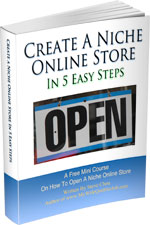
Ready To Get Serious About Starting An Online Business?
If you are really considering starting your own online business, then you have to check out my free mini course on How To Create A Niche Online Store In 5 Easy Steps.
In this 6 day mini course, I reveal the steps that my wife and I took to earn 100 thousand dollars in the span of just a year. Best of all, it's absolutely free!

